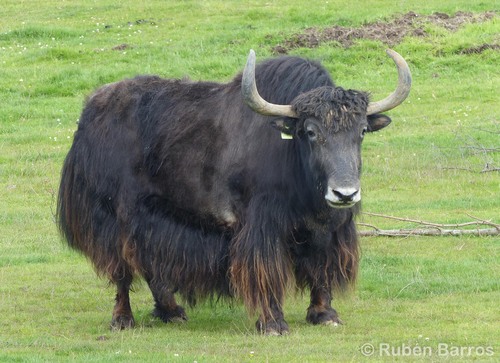
Domestic Yak
The majestic yak, Bos grunniens, thrives in the Himalayan heights. Its thick coat and robust lungs defy the cold, while grazing herds maintain ecological balance. Social and resilient, the yak is a symbol of survival and sustainability in one of the planet's most challenging environments.
15-25 years
Lifespan
225.1 - 997.9 kg
Weight
Brown, Black, White, Dark
Color
25 mph
Top Speed
Characteristics
The yak (Bos grunniens) is a long-haired bovine native to the Himalayan region. Adapted to cold climates, yaks possess dense, woolly undercoats and large lungs for efficient oxygen use at high altitudes. They are social animals, often found in herds, and play a crucial role in the ecosystem by grazing on sparse vegetation and aiding seed dispersal.
Distribution Range of the Domestic Yak
The domestic yak (Bos grunniens) is native to the Himalayan region of southern Central Asia, primarily found in Tibet, parts of China, Nepal, and Bhutan. The wild yak (Bos mutus), a close relative, is mostly found in the Tibetan Plateau and some remote areas of the Himalayas.
Domestic Yak's Habitat
Environmental Conditions
Yaks are adapted to high-altitude environments, typically residing at elevations between 3,000 to 5,500 meters (9,800 to 18,000 feet). These areas feature cold, arid climates with temperatures often dropping below freezing. The landscape is characterized by alpine meadows, grasslands, and shrublands.
Ecological Niche
Yaks are well-suited to cold, mountainous regions where they graze on grasses, herbs, and shrubs. Their thick fur and large lungs are adaptations for surviving in low-oxygen environments. They play a crucial role in their ecosystem by grazing, which helps maintain meadow and grassland health, and their droppings provide nutrients for the soil.
Copyright @ Nature Style Limited. All Rights Reserved.
 English
English